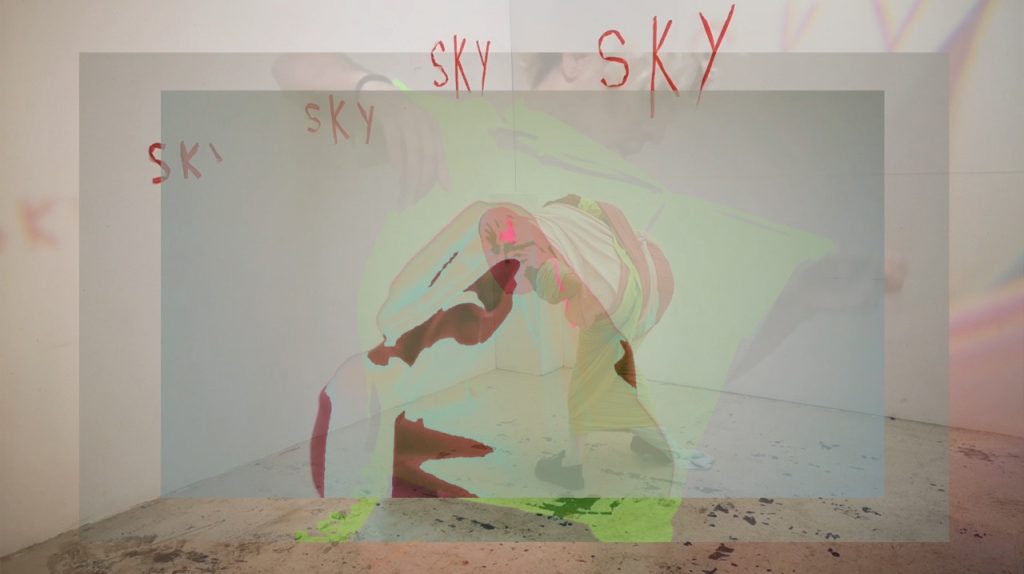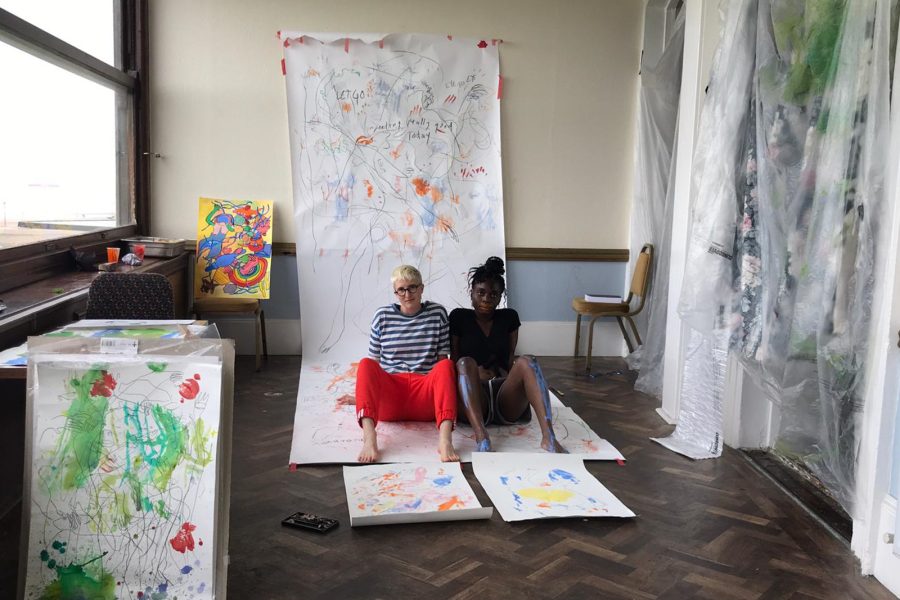What drew you to each other’s practice?
We shared interests in choreography, new materialism and visions of interspecies (and intermatter) growth, as well as a desire for branching out from performance, as a starting point, to a wider interdisciplinary web and challenge the way we had come to be working (e.g to explore sculptural and digital practice). We found in each other different skills and ways of exploring uniting concerns; similar hopes, inspirations and guiding principles for making and existing within an artistic sector in a way that is kinder and more sustainable to ourselves, our ideas and our surrounding environment(s).
Why did you choose the idea you will be working on?
During the two years we have been working together, we have challenged each other to branch out into different disciplines, genres, interests, and have grown a lot as individual artists from the constant contact we have kept, and the interconnectivity that has been created between us. It was striking to us that all this work was done online, from different cities, with us rarely sharing physical space. In our artistic and conversational exchanges throughout the past two years, we have always discussed and experimented with the materiality of distance and were always committed to framing its restrictions as possibilities that re-shape the form/content/aesthetic our work might take.
Already earlier in 2021, in the context of a micro-commission by AXISWeb, we spent some time thinking about ethical and sustainable ways of using digital technology, looking specifically at how to find creativity and artistic collaboration through these online spaces. When chatting about the 1:1 FUND, it was clear we wanted to get together and exist with each other beyond the digital. It felt like the right moment to turn our attention to the history of long distance communication itself. We find inspiration and hope in ecofeminist thought and the possibility of cooperation and interdependency between species, so we decided to include biological phenomenon much beyond the perception and capabilities of human beings. We want to learn also from how other species have communicated at distance long before we began to exchange information via the deep seas, through copper cables we culturally understand as ‘wireless’.
What is the one thing you most hope to gain from undertaking this work?
Both of us are predominantly practitioners working with liveness and with performance; we are used to bodies: our own moving body, the idea of a live audience, the physical space of venues, the relationship of proximity and sharing-space. Up until this point, the complete framing of our joint-practice has existed on a parallel world, with reference to, but no real presence, of those crucial components. This work will allow us to get together and consider those things in relation to our collaboration in a practical way.
We hope that we will gain a better understanding of the movement and artistic aesthetic we have been building together and of how our bodies interact in space. We also will aquire a foundational knowledge in the multilayered evolution journey of the technology that has nurtured our work together so kindly (long distance communication) and end this work with the early stages/terms (and concrete plans for further development) of our joint vocabulary. We hope during this time to build a stable foundation to improvise from, in whatever stretch of physical proximity we happen to be in next.
Moa Johansson (UK/SWE) is a performing-artist whose interdisciplinary practice balances between the moving body, photography and sculptural work. Moa creates durational temporalities; on-going actions in which she explores real time situations and its various frictions. In the context of intersectional queer ecofeminist reading, Moa investigates theories concerning the body, space, materiality, ephemerality and (fleshy) liveness. Moa has presented work in gallery spaces, performance venues and festival contexts around the UK and internationally including Steakhouse Live, Humber Street Gallery, Summerhall, The Yard Theatre, SPILL Festival (UK); Cell63 (DE); Kartnart (PT); Fållan 10, Stockholm University of the Arts and Fotografiska (SWE). Moa’s first solo-exhibition ‘Sympoietic Temporalities’ was presented at Husk Gallery (London). Since 2016, Moa has collaborated with Live Artist Julia Bardsley. Most recently in An APIAN Paradox that was presented at Fierce Festival and Queen Mary, University of London. In 2018, Moa was mentored by Rosana Cade for the development of ‘louder, she said what’ as part of Tempting Failure’s New Commission programme. Moa graduated in 2016 with a BA(Hons) in Drama from Queen Mary, University of London.
An*dre Neely is an artist working at the intersections of performance, writing and digital practice. Prioritizing non-hierarchical encounters and process-driven collective practices they play with hybrid-forms and accelerationist speculative fictions to expose the way we organise bodies, we organise work, desire, communication, and identity. An* has collaborated with artists and choreographers including Liz Rosenfeld, Rosana Cade, Okwui Okpokwasilli, Xavier de Sousa, Amanda Piña and Jamila Johnson-Small. Both as author and performer, they have shown at venues including Tate Modern, V&A Museum, Fierce Festival and The Yard Theatre (UK); Hebbel-Am-Ufer, Gorki Theater and Kunst Werke Institute (DE), Warehouse9 (DK) and Teatro da Politécnica (PT). Most recently, An* was the Assistant Director for THANK YOU FOR YOUR EFFORT EVEN IF THESE REQUESTS CANNOT BE FULLFILLED, by Liz Rosenfeld & Rodrigo Garcia Alves, at Sophiensaele Berlin; developed ‘a future memoir’, a two-part radio-performance aired at Sound Art Radio in April 2020/21; and is a recipient of the DIS-TANZ SOLO Research Scholarship for Dance, by the Dachverband Tanz Deutschland. They graduated in 2017 with a BA(Hons) in Performance Arts from The Royal Central School of Speech and Drama, London.


